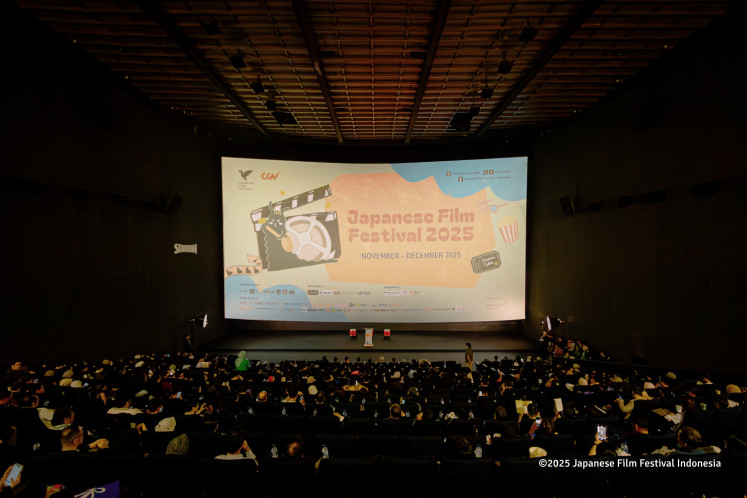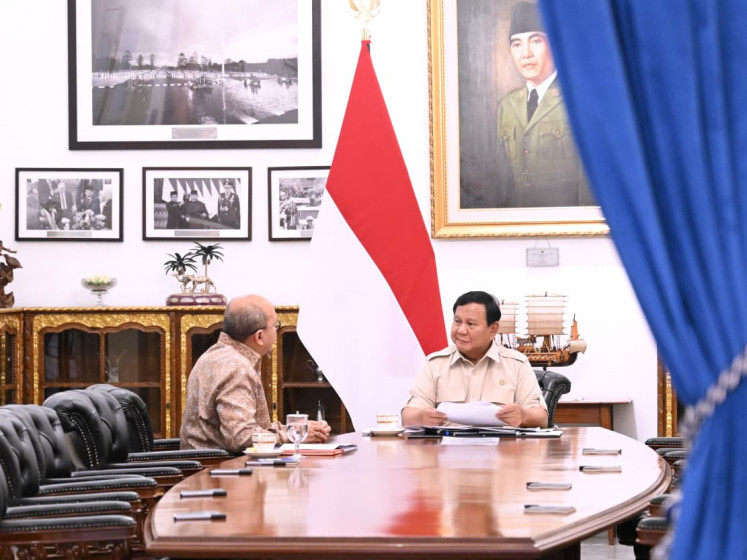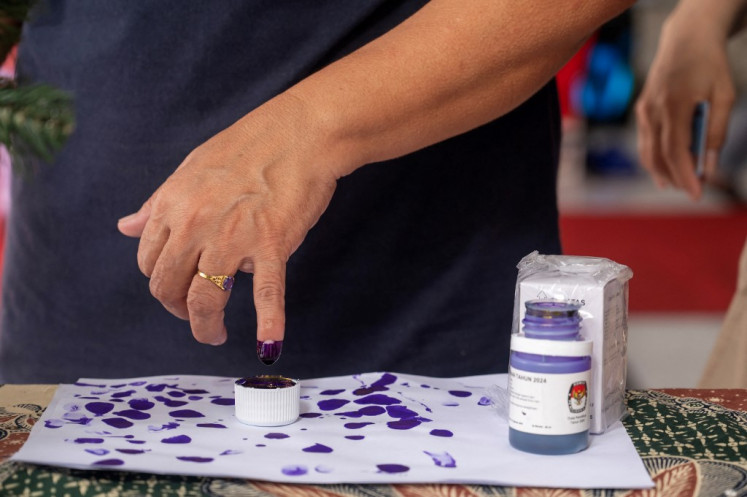Popular Reads
Top Results
Can't find what you're looking for?
View all search resultsPopular Reads
Top Results
Can't find what you're looking for?
View all search resultsRichard Rianto: A top vaccine scientist ' from Bogor
JP/Hans David TampubolonGrowing up in Bogor, West Java, in the 1980s, Richard Rianto never imagined he would become one of the worldâs top vaccine scientists
Change text size
Gift Premium Articles
to Anyone
JP/Hans David Tampubolon
Growing up in Bogor, West Java, in the 1980s, Richard Rianto never imagined he would become one of the world's top vaccine scientists.
His dream was enroll in the Bandung Institute of Technology (ITB), the nation's most prestigious state-run technical university. However, Richard ended up in Hawaii, where he began his journey as a scientist specializing in vaccine analysis.
'It was not easy for people like me to get into state universities during that period,' the 52-year-old said. 'It was President Soeharto's period and during that time, Chinese-descendant people like me often faced difficulties when we tried to get into state universities.'
Richard said that he could have enrolled in ITB without taking the entrance test. 'I was a runner up for a science competition held by LIPI [Indonesian Institute of Sciences] during high school and the first three winners could choose to go to any university of their choice.'
Relatives living in the US state of Hawaii, however, suggested that he try studying at University of Hawaii at Manoa, located in Honolulu on Oahu Island. 'I thought about it for a while and for whatever reason, I decided to give going to Hawaii a try.'
Richard studied chemistry, which he grew to love thanks to a teacher, Wendy Rasyid at Regina Pacis high school in Bogor.
'How Pak Wendy taught chemistry was very inspiring. He always showed something new and I was completely fascinated by the endless possibilities offered by the world of chemistry,' Richard said.
At Hawaii, Richard was initially disappointed. 'I had already mastered the materials that they taught to sophomore students there. The same materials were taught to me when I was still a senior high school student in
Bogor. So, I found it too easy and was not challenging enough for me,' he said.
However, Richard said he quickly learned that the US system was superior. 'They have excellent facilities and infrastructure for research. That is what all scientists need to do their work,' he said.
After graduation, Richard completed his master's and doctoral degrees at the University of Chicago and then lectured at his alma mater and other universities.
In 2001, Richard he took a job as a biochemical analyst for Merck Sharp & Dohme (MSD), joining a team that devised a vaccine for the human papilloma virus (HPV).
HPV vaccine molecule - NIH
The vaccine ' HPV Quadrivalent ' took eight years to create. After the success, Richard was promoted to scientific supervisor for MSD's biochemistry group and its vaccine and analytical lead.
'Developing vaccine is a lot harder than producing medicines,' Richard said.
A vaccine usually contains an agent that resembles a disease-causing microorganism, made from weakened or dead forms of the microbe.
The purpose of a vaccine injection is to stimulate the body's immune system to recognize the agent as a threat, destroy it and keep a log of it for the future.
'When dealing with vaccines, we have to be very careful. My main job is to analyze the vaccines that are being developed in every phase of the development. These could take years to complete. The vaccine should also be tested to a large number of test subjects before we can be sure that it is safe and efficient,' Richard said.
The HPV Quadrivalent vaccine can be given to males between nine and 26 and to females between nine and 45.
HPV is the main cause of cervical cancer. It has at least 130 varieties, making it one of the most dangerous viruses known to man, according to Richard.
Globally, the World Health Organization (WHO) estimated around 11 percent of women with normal pap smears are infected by HPV and the virus is found in 99 percent of women who suffer from cervical cancer.
'Basically, there is a woman who dies due to cervical cancer every hour,' Richard said.
In Indonesia, 38 new cases of cervical cancer emerge daily and 70 percent of them are in advanced stages.
Richard said that given the incidence of cervical cancer, HPV and other virus-driven illnesses such as dengue fever in Indonesia, the government should develop biochemical technology.
'Vaccines could be a lot cheaper if they are being developed locally,' Richard said.
Indonesia had no lack of human resources, Richard said, adding that he knew of many brilliant Indonesian scientists working abroad who would like to return home to work.
'For scientists, like me, money is never the issue,' Richard said. 'We work for the sake of science. But we can only do our work properly if we have good research labs and facilities. If we do not have that, then how can scientists develop anything?'
Laboratory of Tumor Virus Biology













